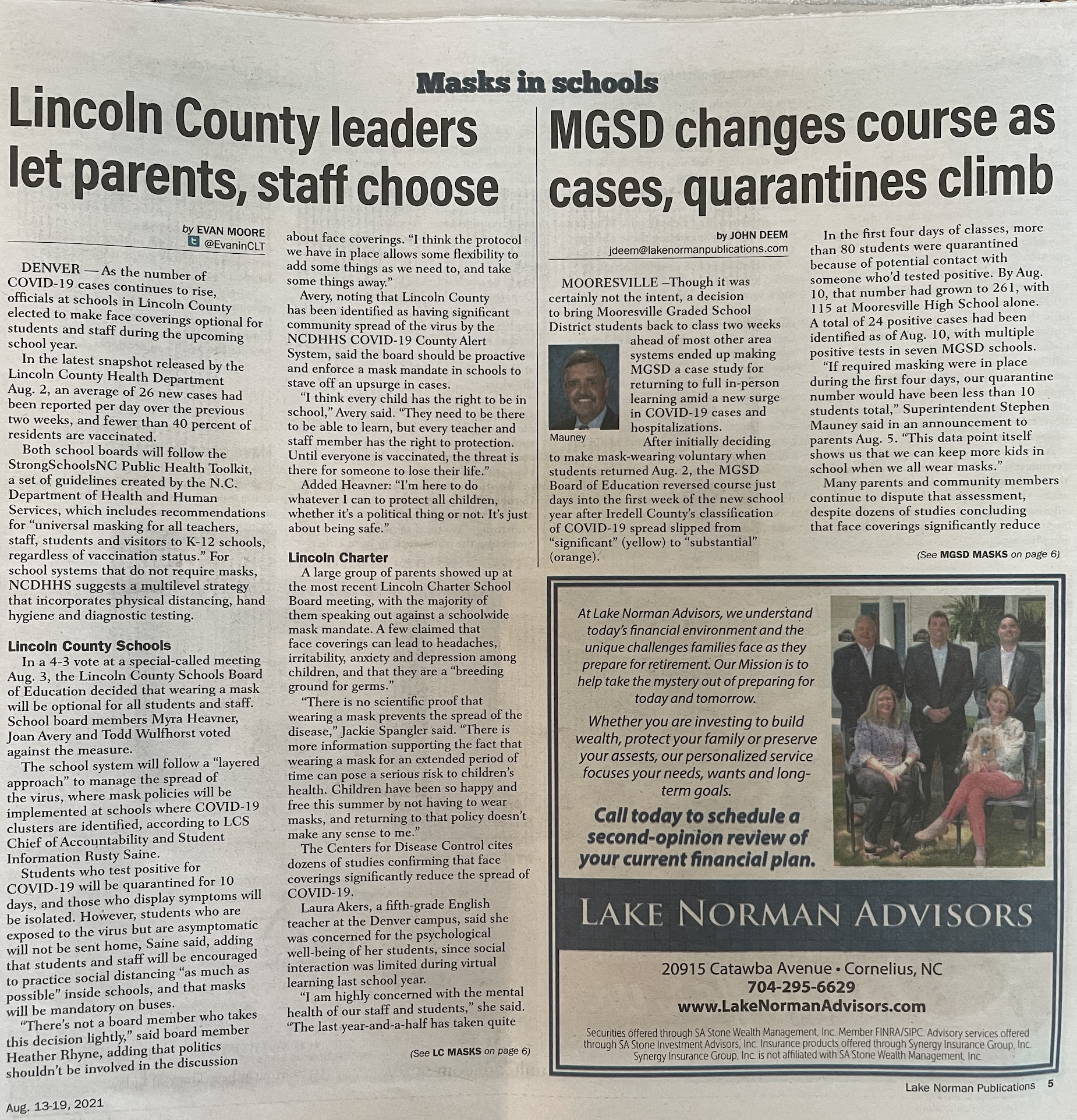There is a global infection surge of the Delta COVID variant driving governments and companies to enact policies to reduce the risk. New Zealand, China (selective provinces/ports) and Hawaii are prime examples of governments moving to control the outbreak. Companies are also moving to control the surge with hospitals leading the way requiring employee vaccinations and mandatory masks. United Airlines and Tyson Foods have required their employees to get the vaccine. Even the US Defense Department is going to require vaccinations.
The Delta variant outbreak is causing leisure and hospitality, travel, bars, restaurants and retail to be negatively impacted. Tech will continue to benefit as work from home/anywhere remains in place. Foreign supply chain issues will remain a major risk as countries shut down and factories in the US follow. As an example, Toyota is shutting down 40% of its global production and Ford is shutting a plant in Kansas City. All of this is connected to COVID and how different areas of the world approach the new Delta outbreaks.
In the United States, this has major implications for economic growth and jobs. As I make the case below, I believe we’ll see an infection surge that will peak in the US by mid-September as local officials, not federal or CDC, make adjustments to COVID policy.
Currently, the major US outbreak battleground location is driven by the time of year. In the South and Northwest, people are indoors more to escape the heat. However, the key issue for the spread of Delta will be schools reopening with teachers and children heading back. Given the belief that mandatory masks are infringing on individual liberty and uncertainty on how to stay safe, school districts are already struggling with how to approach the surge in Delta.
The goal should always be to reduce the spread and lethality of COVID with the least damage to people’s lives. Vaccinations are the best, then masks. For those circumspect about masks, I understand. There has been a lot of misinformation on masks and their effectiveness. However, if they weren’t effective, why would hospitals, doctors and nurses use them to combat getting the disease? Here’s the best info on masks from the WSJ. (Unfortunately, their op-eds don’t reflect this nor does Potomac Watch.)
(Side note, I’m very respectful of individual choice (plus religious reasons) and people who choose not to either wear a mask or get a vaccination. Yet, we must recognize choices have consequences. And it becomes a question of whether the choice made is worth the negative outcome especially when children are impacted.)
Chicago is emblematic of this complexity as the Chicago Teachers Union (CTU) and the Chicago Public Schools (CPS) can’t agree on a solution. This creates a scenario where low and middle income students fall further behind after the 2020 shutdown. CPS staff and students will be required to wear masks indoors regardless if they have been vaccinated or not. Remember, elementary students are not eligible for COVID vaccinations per CDC guidelines. Illinois has 64.6% of the 12.7m population vaccinated with 1 dose. Yet, CTU and CPS can’t agree on what will be the appropriate safety protocols to protect staff and students.
In North Carolina, we see the challenges and outcomes starkly displayed in a recent local newspaper (yes, they still exist). The state has 53.6% of the 10.2m population vaccinated with 1 dose. The picture below shows a clear before and after example of what occurs when there is no mask mandate. Keep in mind, these schools are within 10 miles of each other. On the left, the Lincoln County Schools Board of Education just voted to make masks optional for all students and staff when they begin in late August.

On the right, the Mooresville Graded School District (MGSD) brought back students 2 weeks early without masks and the outcome was striking. In the 1st four days of classes, 80 students were quarantined. After 8 days, the numbers swelled to 261. MGSD quickly reversed policy and required masks. Here’s the key statement by Superintendent Stephen Mauney, “This data point itself point shows that we can keep more kids in school when we all wear masks.” This is likely the most salient argument to those currently unwilling to give up their freedom of choice on masks.
I believe this is representative of what is occurring in the majority of school districts across the United States, with lowest vaccination states having the strongest debates. For the districts voting to open and giving parents the choice on masks, the outcome will likely be what happened at MGSD: a major outbreak and a shift towards masks. Keep in mind, children have much stronger immune systems than adults. The students can become infected and spread it to adults at home. Adults not vaccinated at home will be the ones potentially experiencing the worst outcomes. The simplest solution would be for everyone to get vaccinated. Masks, better ventilation,
If my theory is correct, we’ll see a surge from now until mid-September. The news on infections will continue to get worse and the markets/economy/Fed policy will reflect the surge. Already, we are seeing TSA travel, reopening theme sectors and Federal reserve policy minutes reflect the surge. We should expect this to continue until school districts experience an outbreak and shift.


